Apple's new 13-inch MacBook Pro with Touch Bar embraces the future, delivering it in a super light, portable, attractive and expensive package. But are users ready to embrace that future? And does the 13-inch model have enough horsepower and connectivity? Find out in AppleInsider's full review.
At its base configuration, $1,799 the 13-inch MacBook Pro with Touch Bar ships with an 2.9-gigahertz Intel dual-core Core i5 and integrated Iris 550 graphics. The processor options themselves are slightly faster than last year's MacBook Pros, but most users won't notice the difference, as the biggest enhancements come from other internal changes and an entirely new chassis.
A welcome change is faster 2,133-megahertz RAM. The base configuration includes 8 gigabytes for the 13-inch model, though it can be doubled to 16 gigabytes. There is no 32-gigabyte option, on either the 13- or 15-inch models.
Also new this year is a space gray option. The MacBook Pro can also be purchased in silver, but there are no gold or rose gold shades like with the 12-inch MacBook.
The default configuration also includes 256 gigabytes of storage.
For our review, AppleInsider tested a top-of-the-line configuration, featuring a 3.3-gigahertz Intel Core i7 processor with 16 gigabytes of RAM and a 512-gigabyte solid-state flash hard drive, carrying a suggested price of $2,499.
Touch Bar
We like it a lot — but for now, it's a work in progress.
Arguably the biggest change for this year's update, the Touch Bar comes naturally and works exceptionally well for certain functions. After a few days of use, there are some applications we found invaluable, while others were superfluous.
As with all new input methods, the Touch Bar will take some time to mature and find its best uses.
Of note: Customization is key. Apple has made great efforts to give users the ability to tailor the Touch Bar as they need. It's great.
We don't really use Siri in macOS Sierra, so we swapped out the dedicated Siri button. Of more value to me was a screenshot tool, which we added to the quick Control Strip on the far right side. Tapping that icon brings up the screenshot select tool, replacing the need to use the keyboard command Shift-Command-4.
Because it's context sensitive, the Touch Bar then displays a series of options after the screenshot tool is tapped. Options displayed include Cancel, Selected Portion, Window, Entire Screen, and a Save To location chooser.
This is just one, small example, but there are dozens of these across macOS Sierra. Another great one: Playing music in iTunes brings up a fourth, temporary link to Control Strip, and tapping it allows for more advanced music controls, including scrubbing and skipping tracks.
All of this goes to show how the Touch Bar will mean different things to different people. We feel confident that most users will find utility in it.
Another use that stood out to us was in Safari. By default, open tabs are displayed at the center of the Touch Bar, in the form of icons that show prominent graphics from each open tab.
With the Touch Bar, switching between tabs is a breeze. Simply tap on the icon for each tab, or drag your finger across to quickly browse between open tabs. After a few days of using it and coming to rely on it, it makes going back to a non-Touch Bar Mac feel different and subpar.
The usefulness of the Touch Bar is less apparent in other apps. We could see where some users who struggle with typing might appreciate the QuickType predictive suggestions, but for touch typists like us, this feature was completely worthless.
There's even Touch Bar support integrated into Terminal, including a quick link to change the background color of the window. How necessary is this for a dedicated button? Not very, obviously. But it's not like it gets in the way of using the app.
Touch ID
It works, and it's fast.
Logging in to your MacBook Pro with Touch ID when returning from sleep is quick and simple, just as you'd expect. The process is just as fast — if not faster — as it is on a newer iPhone.
Apple Pay is here too, allowing you to securely enter credit card payment information on participating websites. At the moment, Apple Pay support on the web is somewhat limited, but support is growing — and we expect that to accelerate now that Touch ID is integrated into the Mac itself. Previously, users had to find their iPhone to authorize a purchase.
There is one key way that Touch ID on the MacBook Pro is even better than on iOS: faster user switching.
With a different person's fingerprint scanned, you can quickly and securely switch between active users on the MacBook Pro.
It feels inevitable that multiple-account, multiple-fingerprint support will eventually make its way to iOS devices, particularly as they become more powerful and feature complete. But for now, Apple has only focused on multiple accounts on iPad for education use.
We could really only find one downside to Touch ID on the MacBook Pro: Unfortunately, if you completely shut down your notebook, you must reenter your password to login. This shouldn't come as a surprise — it's a security decision, and it operates identically to Touch ID on iOS devices.
But you should know that if you're the type of person who shuts down your computer on a daily basis, you'll still be required to enter your password every time you reboot, negating at least some of the convenience of Touch ID.
Aside from this minor quibble, we're extremely pleased with Touch ID on the MacBook Pro and think it's a great addition to the Mac lineup.
USB-C
The switch to USB-C is a mixed bag.
Yes, if you connect a number of devices to your MacBook Pro, you're going to need to buy dongles, adapters, hubs, or new cables. With USB-C (and Bluetooth) remaining in our lives for the foreseeable future, this seems like a one-time painful transition, thankfully eased slightly by Apple with discounts on compatible cables.
We had a USB-C to Lightning cable handy that allowed us to plug in and charge our iPhone and iPad with ease. But Apple does not ship any of its devices with this cable (yet), and we imagine it will be an inconvenience for some users.
It's also worth noting that Apple does not sell a USB-C connected Apple Watch magnetic charging cable (likely because the cable only supplies power, not data). If you're the type of person who likes to charge your Apple devices through your MacBook, you'll need a dock to re-energize your Apple Watch.
The reversible USB-C ports also feature integrated support for Thunderbolt 3.
Thunderbolt 3 has a lot of potential, but like the two previous generations of Thunderbolt before it, we're not holding our breath for a variety of speedy accessories just yet. Thunderbolt never quite caught on like we would have hoped, aside from some monitors and external hard drive arrays.
With Thunderbolt 3, there's reason to be excited again, but it's going to take time for accessories to come to market. Hope for the best, but don't expect much in the near term.
Though some professional-grade users have decried Apple's complete embrace of USB-C, we can't fault the company for its approach, and think it's better than leaving one foot in the present and one in the past.
Yes, users who are tied to numerous legacy USB accessories, or who may be dongle averse, will want to sit out this generation and wait for the rest of the computing world to catch up. But we don't think most users will be that bothered by Apple's forward thinking.
No more MagSafe
Et tu, MacBook Pro?
Perhaps the biggest advantage of switching to USB-C is the fact that any of the device's four ports can be used to power and recharge the notebook. We found this to be especially convenient depending on where you are using the notebook — there's no longer a need to wrap your power cable around to the other side (and risk an early fraying of the wire) to keep it charged.
However, we must lament that the switch to USB-C for charging means the loss of MagSafe.
MagSafe has long been a defining, stand-out feature for Apple's notebook lineup. We cannot count how many times our MacBooks have been saved from certain death when someone trips over the power cord.
That quick-attachment, quick-release advantage is gone with the switch to USB-C. The cable plugs in snugly and securely, and if someone yanks on your power cord, your MacBook Pro is liable to go flying.
For some, this may not be a big deal. For us, we view it as a step backwards.
This change is not a surprise — Apple signaled it in 2015 with the launch of the ultraportable 12-inch MacBook. However, that notebook only has one USB-C port for syncing and charging, and thankfully the MacBook Pro has four.
Keyboard
It's different.
Like the 12-inch MacBook before it, Apple has transitioned to an entirely new style of chiclet keyboard for the MacBook Pro. It's a full-size keyboard, complete with the same weird arrow keys. It feels different.
After typing on it for a few minutes, you won't really notice a difference physically. It's responsive and it feels good.
A more lasting change, however, still noticeable after adjusting to the MacBook Pro, is the loudness of the keyboard. That's right: It's noticeably louder than the previous-generation MacBook Pro.
We suspect most people won't notice or care about this, or they'll adjust to it. And frankly the fact that the redesigned switch style doesn't bother us is the best thing we can say for the new, thinner keyboard. It's not a problem, but you should know that it is different.
Retina display
Gorgeous gets even prettier.
The Retina display on Apple's late 2016 MacBook Pro with Touch Bar includes support for wide color. This means that a truer, more dynamic range of colors is visible on the panel.
In a side by side comparison of the latest MacBook Pro with a 2015 model, the new display is noticeably brighter, and colors do pop a bit more. That said, Apple's past Retina displays have also been fantastic, so unless you're specifically doing a side-by-side comparison or have a need for wide color support, you're unlikely to notice.
Perhaps even more impressively, the new MacBook Pro display is brighter with more accurate and vibrant colors while also being noticeably thinner than previous MacBook Pro panels.
As a side effect of the panel being thinner, the Apple logo on the back of the MacBook Pro no longer illuminates. The bezel around the outside of the screen has also been reduced, reflecting a smaller footprint for the 13-inch model when compared to its predecessor.
Design
It's thinner, and better.
That smaller footprint is felt in a number of areas, including a reduced weight down to just 3 pounds.
With an all-aluminum chassis, the 13-inch MacBook Pro is also svelte at just 14.9-millimeters thick. It's an impressive achievement in design.
Despite a reduction in size, Apple has managed to fit in a substantially larger multi-touch trackpad, allowing users more room to sweep across the display. The trackpad now features something of a "widescreen" ratio, matching the display above it.
As with the 2015 MacBook Pro update, the 2016 13-inch model features the incredibly impressive Force Touch trackpad. Most users won't even notice that the trackpad itself does not click — using Apple's proprietary haptic feedback technology, it simply feels like a click when pressed.
The speakers are also considerably louder, and are particularly good for a super thin and light 13-inch notebook.
Prior to getting our hands on the new MacBook Pro, we were worried that the aesthetics of the speaker grilles on the sides of the keyboard might be a downgrade from the all-aluminum surface found on previous models. Fear not, as the speaker grilles are understated and attractive, and the sound itself is a big improvement. In a side-by-side comparison with last year's 13-inch model, the improvement was pronounced.
Oh, also: Unlike the iPhone 7, the 2016 MacBook Pro still features a 3.5-millimeter headphone jack. Put down your pitchforks.
Performance
Do you need power, or portability?
When it comes to choosing a MacBook Pro, for years the tradeoff has been in graphics. While the 15-inch model has a large enough frame to fit in its own discrete graphics card, the 13-inch model offers no such luxury.
That hasn't changed this year.
Over the years, Intel's integrated graphics have come a long way. But they still do not have the raw horsepower to compete with a dedicated GPU.
For those who need the extra horsepower, the 13-inch MacBook Pro has never been and will never be a consideration. That remains the case, and this review is not for those users.
As the sum of its parts, Apple's late-2016 13-inch MacBook Pro with Intel Iris 550 is more than capable enough to handle most daily tasks users can throw at it, including extensive multitasking with numerous tabs and apps open at once.
Everyone's workflow is different, but if you're an occasional Photoshop or Final Cut Pro X user who isn't shooting Canon 5D 30.4MP photos or 4K Phantom footage, you'll likely have more than enough here to get you through the next three to four years of use.
As for battery life, our tests showed the new MacBook Pro with Touch Bar comparable to the last few generations of MacBook Pro models. We had no problem getting through a standard work day with brightness set to a lower setting and using Wi-Fi connectivity for tasks like browsing the web and checking email. Bringing more intensive tasks into the fold, such as editing video, would prevent 8-plus hours, however. Apple's own tech specs advertise up to 10 hours of uptime when browsing the web.
To future-proof your machine, we would advise that most users opt for the 16-gigabyte RAM upgrade. Sticking with a 256-gigabyte SSD is not ideal, but since storage can be easily expanded with external drives, the RAM should be the first choice in upgrading for most users.
As we noted in our 15-inch MacBook Pro with Touch Bar review, some professional and prosumer users with needs for more RAM and processing power than Apple's latest notebooks can deliver are either going to wait for future Intel components to arrive, or they'll need to invest in a desktop machine. If you're in that camp, the 13-inch MacBook Pro is not a candidate for daily use. And it never was.
Our MacBook Pro came with a dual core Intel Core i7-6567U CPU clocked at 3.3GHz, good enough for a single-core score of 4,321 and a multi-core score of 8,270 as measured through the Geekbench 4 benchmarking suite.
For those who praise portability but need more ports and horsepower than the 12-inch MacBook, the 13-inch MacBook Pro with Touch Bar delivers. Though the Intel processor is not a significant improvement from a year ago, Apple's super-small chassis offers what remains the most powerful all-around notebook in its class.
What about the model without Touch Bar?
For some, the Touch Bar may come across as a gimmick.
Those users can opt for the same chassis without a Touch Bar and save $300 in the process. That's not a small amount.
The model sans Touch Bar can even be upgraded to a Core i7 processor and 16 gigabytes of RAM, though it has slightly slower Intel Iris 540 graphics and 1,866-megahertz RAM. The entry-level model also downsizes to just two Thunderbolt 3 ports, rather than four.
To us, the question isn't so much whether the Touch Bar is worth the extra $300, but whether the 13-inch MacBook Pro with Touch Bar is worth a starting price of $1,799.
If you've upgraded your Mac to a Retina display in the last two or three years, you should probably hold off. It's hard to recommend the 13-inch model with Touch Bar to you at $1,799, and anyone eyeing the $1,499 model without Touch Bar should consider waiting until they can afford the better model with faster RAM.
We're thankful the model sans Touch Bar exists, and we believe it has a market it will attract. But that market should, and likely will, remain small.
Conclusion
The first MacBook Pro with Retina display debuted in October of 2012.
Its starting price was $1,699 — $100 cheaper than this latest-generation model with Touch Bar and USB-C.
We can't help but feel that the new 13-inch MacBook Pro with Touch Bar would have felt like a better value at that same $1,699 starting price. Presumably Apple felt the same way, which is likely the main reason the $1,499 model without Touch Bar exists.
While some professional users would have preferred that Apple put one foot in the future while keeping another firmly planted in the past, retaining full-size USB ports alongside new USB-C Thunderbolt 3 ports, Apple has embraced the future. And it's wise to do so.
Now it's up to end users to decide if they, too, want to embrace the future.
The future is pretty awesome. But it's also damn expensive.
Score: 4 out of 5
How to find the lowest prices when buying
Before purchasing your new 13" MacBook Pro, make sure to check out AppleInsider's 13" MacBook Pro with Touch Bar Price Guide to find the lowest prices available for your desired configuration and see which Apple authorized resellers currently have your desired model in stock.
As of press time, new orders for these new 13" MacBook Pros with Touch Bar are backlogged by 4 to 5 weeks through Apple's direct and indirect sales channels, but Authorized resellers are making up for lost time with some deep discounts. Depending on the configuration, shoppers can save hundreds on their new MacBook Pro with Touch Bar by pre-ordering from an Apple authorized reseller who does not collect sales tax on orders shipped to most states.
AppleInsider partner Adorama, for example, is offering AppleInsider readers the lowest prices anywhere on pre orders for the 13" MacBook Pros with Touch Bar and 13" MacBook Pros with Touch Bar bundled with 3 years of AppleCare extended protection when using the links below (or in our Price Guides) and then applying promo code APINSIDER at checkout. Because the Apple authorized reseller does not collect sales tax on orders shipped outside of NY and NJ, most shoppers will save between $325 and $415 in savings compared to paying full price with tax at Apple retail stores.
To get the discounted prices, use the link below (or in our Apple Price Guides), then during checkout, apply promo code APINSIDER in the Promo Code field right after your shipping info (where it says "Do you have a gift card or promo code?"). Adorama will not collect sales tax on orders shipped outside NY and NJ and each system ships for free. These are the absolute lowest prices anywhere for these models.
13" (2.9GHz 8GB 256GB) in Space Gray + AC for $1,888.00 % ($160 off)
13" (2.9GHz 8GB 256GB) in Silver + AC for $1,888.00 % ($160 off)
13" (2.9GHz 8GB 512GB) in Space Gray + AC for $2,098.00 % ($150 off)
13" (2.9GHz 8GB 512GB) in Silver + AC for $2,098.00 % ($150 off)
13" (2.9GHz 8GB 1TB) in Space Gray + AC for $2,488.00 % ($160 off)
13" (2.9GHz 8GB 1TB) in Silver + AC for $2,488.00 % ($160 off)
13" (2.9GHz 16GB 256GB) in Space Gray + AC for $2,088.00 % ($160 off)
13" (2.9GHz 16GB 256GB) in Silver + AC for $2,088.00 % ($160 off)
13" (2.9GHz 16GB 512GB) in Space Gray + AC for $2,288.00 % ($160 off)
13" (2.9GHz 16GB 512GB) in Silver + AC for $2,298.00 % ($150 off)
13" (2.9GHz 16GB 1TB) in Space Gray + AC for $2,688.00 % ($160 off)
13" (2.9GHz 16GB 1TB) in Silver + AC for $2,688.00 % ($160 off)
13" (3.1GHz 8GB 256GB) in Space Gray + AC for $1,988.00 % ($160 off)
13" (3.1GHz 8GB 256GB) in Silver + AC for $1,988.00 % ($160 off)
13" (3.1GHz 8GB 512GB) in Space Gray + AC for $2,188.00 % ($160 off)
13" (3.1GHz 8GB 512GB) in Silver + AC for $2,188.00 % ($160 off)
13" (3.1GHz 8GB 1TB) in Space Gray + AC for $2,588.00 % ($160 off)
13" (3.1GHz 8GB 1TB) in Silver + AC for $2,588.00 % ($160 off)
13" (3.1GHz 16GB 256GB) in Space Gray + AC for $2,188.00 % ($160 off)
13" (3.1GHz 16GB 256GB) in Silver + AC for $2,188.00 % ($160 off)
13" (3.1GHz 16GB 512GB) in Space Gray + AC for $2,388.00 % ($160 off)
13" (3.1GHz 16GB 512GB) in Silver + AC for $2,388.00 % ($160 off)
13" (3.1GHz 16GB 1TB) in Space Gray + AC for $2,788.00 % ($160 off)
13" (3.1GHz 16GB 1TB) in Silver + AC for $2,788.00 % ($160 off)
13" (3.3GHz 8GB 256GB) in Space Gray + AC for $2,188.00 % ($160 off)
13" (3.3GHz 8GB 256GB) in Silver + AC for $2,188.00 % ($160 off)
13" (3.3GHz 8GB 512GB) in Space Gray + AC for $2,388.00 % ($160 off)
13" (3.3GHz 8GB 512GB) in Silver + AC for $2,388.00 % ($160 off)
13" (3.3GHz 8GB 1TB) in Space Gray + AC for $2,788.00 % ($160 off)
13" (3.3GHz 8GB 1TB) in Silver + AC for $2,788.00 % ($160 off)
13" (3.3GHz 16GB 256GB) in Space Gray + AC for $2,388.00 % ($160 off)
13" (3.3GHz 16GB 256GB) in Silver + AC for $2,388.00 % ($160 off)
13" (3.3GHz 16GB 512GB) in Space Gray + AC for $2,588.00 % ($160 off)
13" (3.3GHz 16GB 512GB) in Silver + AC for $2,588.00 % ($160 off)
13" (3.3GHz 16GB 1TB) in Space Gray + AC for $2,988.00 % ($160 off)
13" (3.3GHz 16GB 1TB) in Silver + AC for $2,988.00 % ($160 off)
% Price after exclusive promo code APINSIDER. Adorama does not collect sales tax on orders outside NY and NJ.
Don't want AppleCare? Our coupon code also works on the models without AppleCare. See below. Want the absolute lowest price on a 13" MacBook Pro with a Touch Bar? Shoppers can save $50-$60 on 13" configurations with a Touch Bar using the same promo code (APINSIDER). These systems ship for free as well.
13" MacBook Pros with Touch Bar
13" (2.9GHz 8GB 256GB) in Space Gray for $1,739.00 % ($60 off)
13" (2.9GHz 8GB 256GB) in Silver for $1,739.00 % ($60 off)
13" (2.9GHz 8GB 512GB) in Space Gray for $1,949.00 % ($50 off)
13" (2.9GHz 8GB 512GB) in Silver for $1,949.00 % ($50 off)
13" (2.9GHz 8GB 1TB) in Space Gray for $2,339.00 % ($60 off)
13" (2.9GHz 8GB 1TB) in Silver for $2,339.00 % ($60 off)
13" (2.9GHz 16GB 256GB) in Space Gray for $1,939.00 % ($60 off)
13" (2.9GHz 16GB 256GB) in Silver for $1,939.00 % ($60 off)
13" (2.9GHz 16GB 512GB) in Space Gray for $2,139.00 % ($60 off)
13" (2.9GHz 16GB 512GB) in Silver for $2,149.00 % ($50 off)
13" (2.9GHz 16GB 1TB) in Space Gray for $2,539.00 % ($60 off)
13" (2.9GHz 16GB 1TB) in Silver for $2,539.00 % ($60 off)
13" (3.1GHz 8GB 256GB) in Space Gray for $1,839.00 % ($60 off)
13" (3.1GHz 8GB 256GB) in Silver for $1,839.00 % ($60 off)
13" (3.1GHz 8GB 512GB) in Space Gray for $2,039.00 % ($60 off)
13" (3.1GHz 8GB 512GB) in Silver for $2,039.00 % ($60 off)
13" (3.1GHz 8GB 1TB) in Space Gray for $2,439.00 % ($60 off)
13" (3.1GHz 8GB 1TB) in Silver for $2,439.00 % ($60 off)
13" (3.1GHz 16GB 256GB) in Space Gray for $2,039.00 % ($60 off)
13" (3.1GHz 16GB 256GB) in Silver for $2,039.00 % ($60 off)
13" (3.1GHz 16GB 512GB) in Space Gray for $2,239.00 % ($60 off)
13" (3.1GHz 16GB 512GB) in Silver for $2,239.00 % ($60 off)
13" (3.1GHz 16GB 1TB) in Space Gray for $2,639.00 % ($60 off)
13" (3.1GHz 16GB 1TB) in Silver for $2,639.00 % ($60 off)
13" (3.3GHz 8GB 256GB) in Space Gray for $2,039.00 % ($60 off)
13" (3.3GHz 8GB 256GB) in Silver for $2,039.00 % ($60 off)
13" (3.3GHz 8GB 512GB) in Space Gray for $2,239.00 % ($60 off)
13" (3.3GHz 8GB 512GB) in Silver for $2,239.00 % ($60 off)
13" (3.3GHz 8GB 1TB) in Space Gray for $2,639.00 % ($60 off)
13" (3.3GHz 8GB 1TB) in Silver for $2,639.00 % ($60 off)
13" (3.3GHz 16GB 256GB) in Space Gray for $2,239.00 % ($60 off)
13" (3.3GHz 16GB 256GB) in Silver for $2,239.00 % ($60 off)
13" (3.3GHz 16GB 512GB) in Space Gray for $2,439.00 % ($60 off)
13" (3.3GHz 16GB 512GB) in Silver for $2,439.00 % ($60 off)
13" (3.3GHz 16GB 1TB) in Space Gray for $2,839.00 % ($60 off)
13" (3.3GHz 16GB 1TB) in Silver for $2,839.00 % ($60 off)
% Price after exclusive promo code APINSIDER. Adorama does not collect sales tax on orders outside NY and NJ.
 Neil Hughes
Neil Hughes






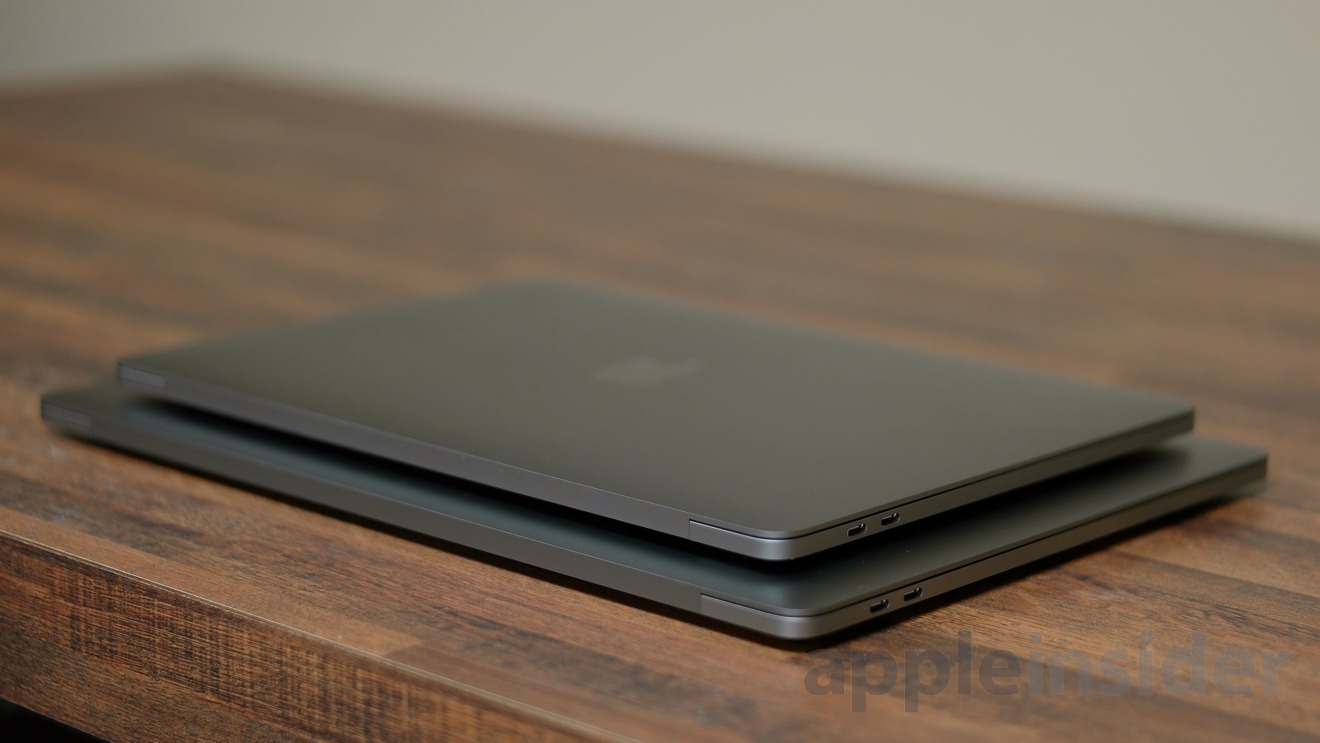
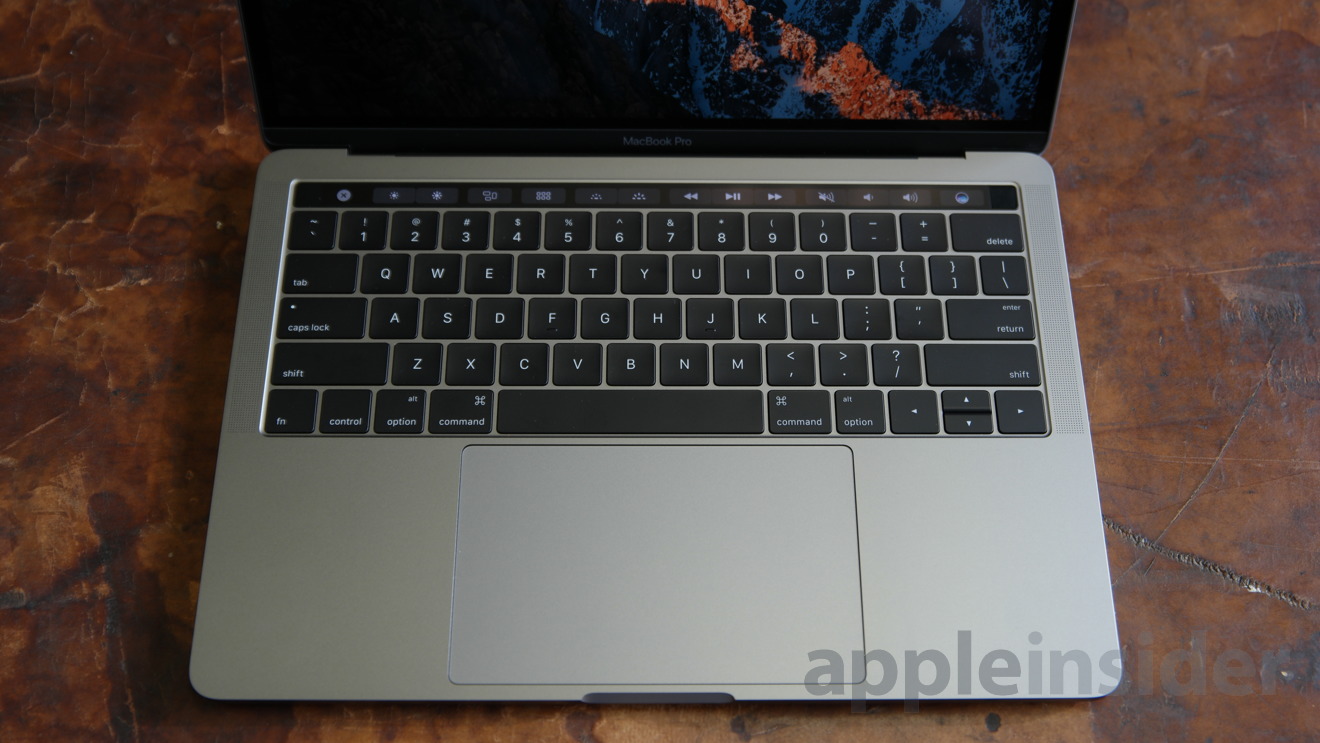



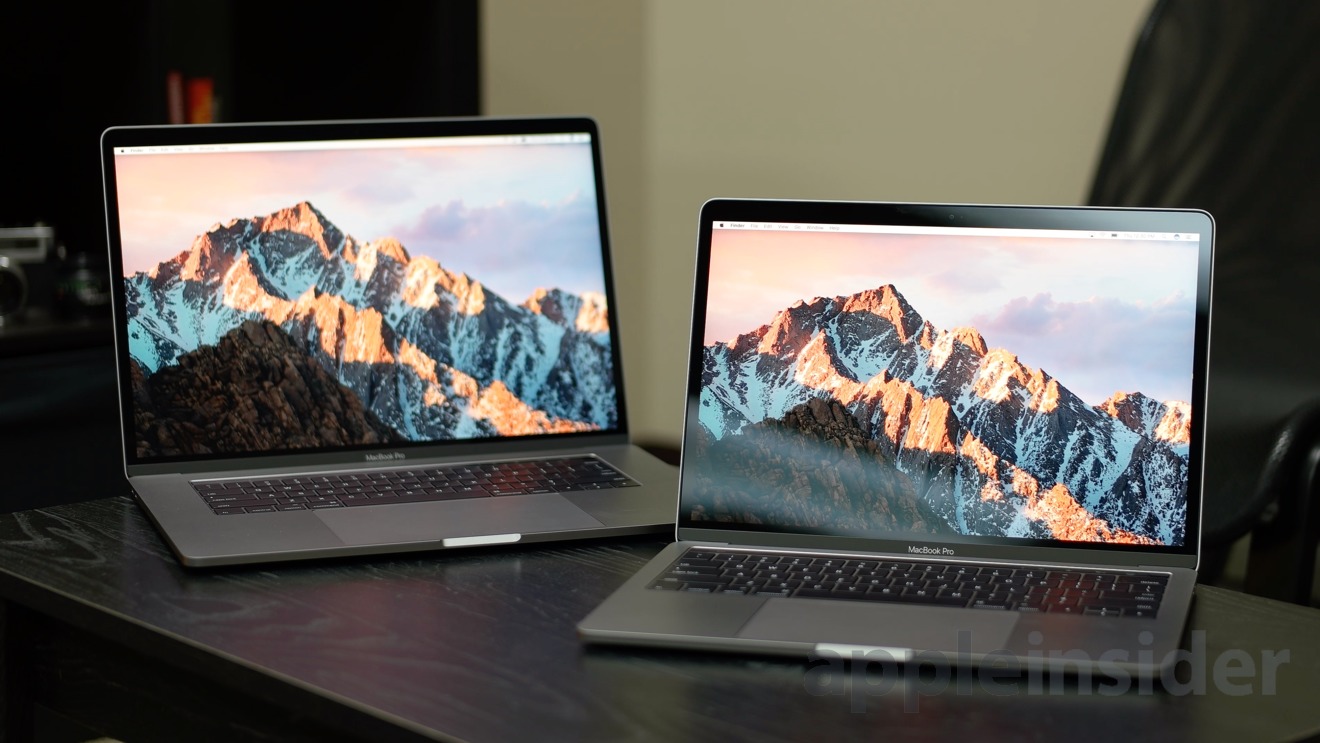






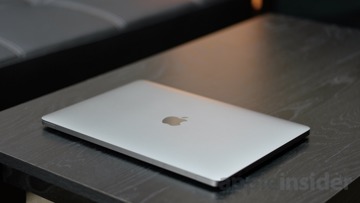







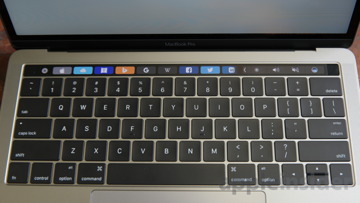















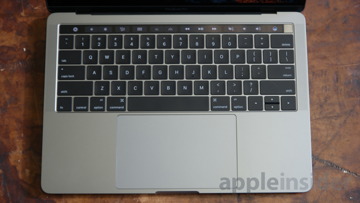
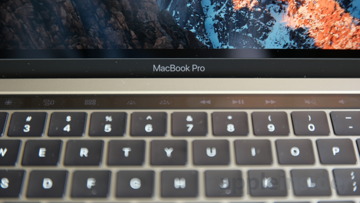


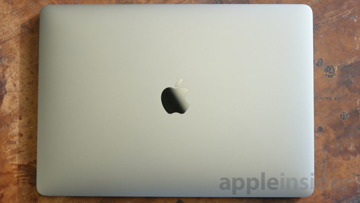










-m.jpg)






 Marko Zivkovic
Marko Zivkovic
 Malcolm Owen
Malcolm Owen
 William Gallagher and Mike Wuerthele
William Gallagher and Mike Wuerthele


 Amber Neely
Amber Neely
 William Gallagher
William Gallagher
 Sponsored Content
Sponsored Content








80 Comments
I really, really want the 15" maxed out, but I'm opting to hold out until Feb/March to see if they do any price drops.. They usually do a small drop in the 6-12 month mark after a major release like this. They did it for new MacBook Air, Retina MacBook, and even the new MacBook, which has seen a price drop twice now.
Summary of pros and cons would be much useful. "The reversible USB-C ports also feature integrated support for Thunderbolt 3". Not really it is the other way round: The reversible Thunderbolt 3 ports also feature integrated support for USB-C. Get the facts! TO ADMINS: carriage returns are deleted here when using Safari on Mac. I have reported that many times in the past to no avail. No problem on other sites.
What? ...not a word about the massively fast SSD? I came from an early 2013 MBP, the storage performance is incredible!